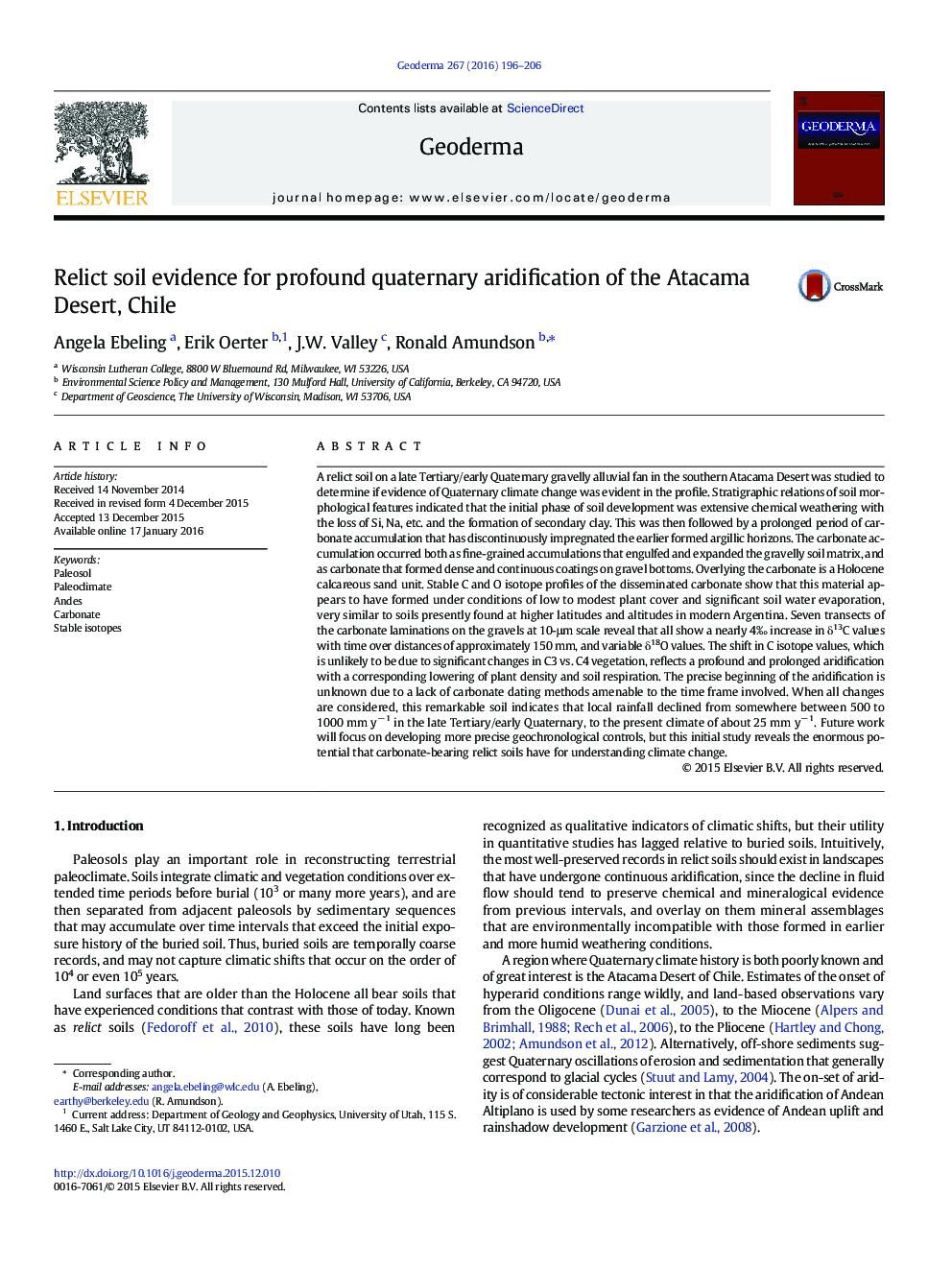| کد مقاله | کد نشریه | سال انتشار | مقاله انگلیسی | نسخه تمام متن |
|---|---|---|---|---|
| 6408388 | 1629450 | 2016 | 11 صفحه PDF | دانلود رایگان |
- The paper shows definitive decrease in rainfall of up to 1Â m since the late Miocene or early Pliocene.
- The paper applies novel micron scale stable oxygen isotope analyses to carbonate laminations.
- The paper advances methods for the choice of immobile index elements in mass loss calculations.
A relict soil on a late Tertiary/early Quaternary gravelly alluvial fan in the southern Atacama Desert was studied to determine if evidence of Quaternary climate change was evident in the profile. Stratigraphic relations of soil morphological features indicated that the initial phase of soil development was extensive chemical weathering with the loss of Si, Na, etc. and the formation of secondary clay. This was then followed by a prolonged period of carbonate accumulation that has discontinuously impregnated the earlier formed argillic horizons. The carbonate accumulation occurred both as fine-grained accumulations that engulfed and expanded the gravelly soil matrix, and as carbonate that formed dense and continuous coatings on gravel bottoms. Overlying the carbonate is a Holocene calcareous sand unit. Stable C and O isotope profiles of the disseminated carbonate show that this material appears to have formed under conditions of low to modest plant cover and significant soil water evaporation, very similar to soils presently found at higher latitudes and altitudes in modern Argentina. Seven transects of the carbonate laminations on the gravels at 10-μm scale reveal that all show a nearly 4â° increase in δ13C values with time over distances of approximately 150 mm, and variable δ18O values. The shift in C isotope values, which is unlikely to be due to significant changes in C3 vs. C4 vegetation, reflects a profound and prolonged aridification with a corresponding lowering of plant density and soil respiration. The precise beginning of the aridification is unknown due to a lack of carbonate dating methods amenable to the time frame involved. When all changes are considered, this remarkable soil indicates that local rainfall declined from somewhere between 500 to 1000 mm yâ 1 in the late Tertiary/early Quaternary, to the present climate of about 25 mm yâ 1. Future work will focus on developing more precise geochronological controls, but this initial study reveals the enormous potential that carbonate-bearing relict soils have for understanding climate change.
Journal: Geoderma - Volume 267, 1 April 2016, Pages 196-206
